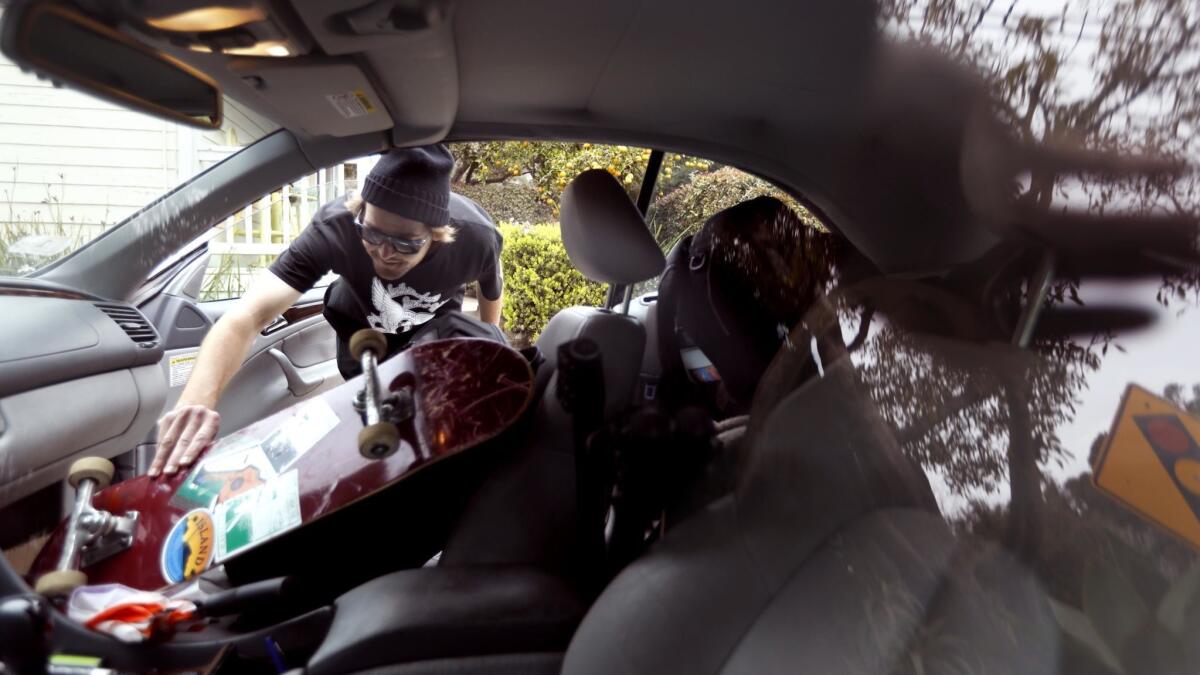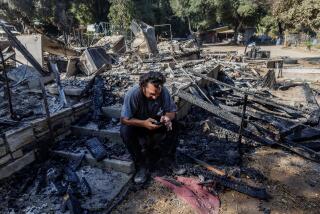Ready for an evacuation? Here’s what to pack

One key to getting through any emergency situation is preparation.
With wildfires raging across California, more and more residents are being faced with having to evacuate. The Mendocino Complex fire is now the largest wildfire in state history, a record previously held by last year’s Thomas fire.
The first thing to pack should be your “go bag” of essentials. That, experts say, should include:
- Water and nonperishable food
- A flashlight
- A first aid kit
- Batteries and chargers for your devices
- Several days’ worth of clothing — including coats, pajamas, underwear and socks
- Moist towelettes, garbage bags and plastic ties for sanitation purposes
- A battery- or crank-operated radio
- A whistle to signal for help
- Local maps in case GPS isn’t working
Beyond that, there are six categories of things to pack if you need to evacuate. They’re called the 6 Ps, said Kate Hutton, a public information officer for the Los Angeles Emergency Management Department.
1) People and pets
Your family members — human and otherwise — should be your first priority when you evacuate. There’s a perception that emergency shelters won’t accept pets, but that isn’t the case in L.A., Hutton said. As long as your pet is under control, on a leash or in an appropriate carrier or tank, the shelter will be able to take you all in.
Make sure you have whatever your pets will need on the road and in a shelter — including food and water, bowls for them to eat and drink from, any medication they take and leashes and toys.
2) Papers and phone numbers
Things such as passports, birth certificates and marriage licenses should all come with you. So should the deed to your house or your rental agreement and any other legal documents. If you’re bringing your pet, make sure to pack proof that it’s up-to-date on vaccinations.
A list of essential phone numbers should be in there too, in case you end up somewhere with a dead cell phone. Make sure you have numbers for doctors, relatives, an out-of-state contact, neighbors, coworkers, your insurance agent, your lawyer, your landlord and your veterinarian if you’re bringing your pet.
3) Prescriptions
Pack anything you’ll need for your health while away from home. This includes prescription medication as well as eyeglasses, contact lenses and vitamins. Don’t forget toiletries such as toothbrushes, toothpaste and contact solution. If you have very young family members, make sure you’ve packed diapers, wipes and the stroller.
A first aid kit should already be in your “go bag,” but if it isn’t, make sure to pack one with bandages and gauze, medical tape, an antibiotic cream, antacids, anti-diarrhea medication, over-the-counter pain relievers and antihistamines.
4) Pictures and personal items
This includes photo albums, framed photos and other irreplaceable memorabilia, along with any personal items you wouldn’t want to lose. We asked our readers what they took with them when they evacuated during the wildfires. Jewelry, a favorite sweatshirt, guitars, crystals, video game consoles, a drone, antiques and a bridesmaid dress for an upcoming wedding were among the items mentioned.
Any personal item is appropriate, Hutton said, as long as it won’t slow down the evacuation process to pack it. (In other words, if your great-grandmother’s crystal unicorn collection requires each figurine to be individually wrapped and boxed, leave it.)
5) Personal computers
Your computer — laptop or desktop — probably contains a lot of important documents, photos and other files. Computers are vital for staying in contact and accessing critical services if you lose your home or have to be away for an extended period of time. Also, don’t forget your external hard drive if you have photos or pertinent data stored there.
6) Plastics
Your credit cards, ATM cards, insurance cards and cash, along with your ID.
“You want to make sure you have the cards in your wallet that will help you get back on your feet, or identification to get back into your neighborhood,” Hutton said.
The best way to know if you’re going to be evacuated is to sign up for mobile alerts at NotifyLA.org. You also can follow the city on Twitter @ReadyLA to get the latest updates.
If you’re under voluntary evacuation or an evacuation warning, start loading your car so you’re ready to go as soon as the order comes. Knock on your neighbors’ doors to make sure they’re aware of what’s going on.
As soon as you get a mandatory evacuation order, leave. The most important thing you can save from a fire is yourself.
More to Read
Sign up for Essential California
The most important California stories and recommendations in your inbox every morning.
You may occasionally receive promotional content from the Los Angeles Times.











